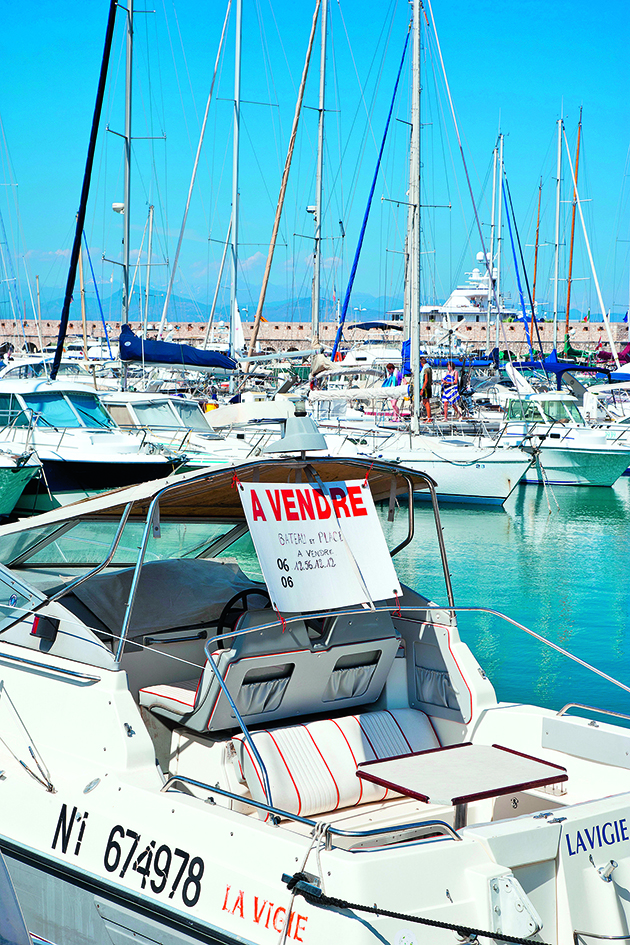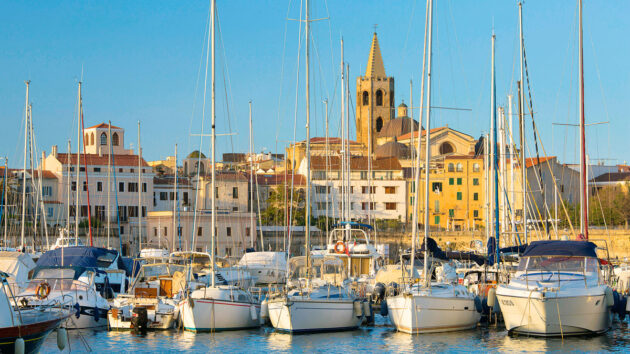Simon Hampton-Matthews of the Cruising Association’s Regulatory & Technical Services (RATS) Group discusses keeping a boat to Europe, VAT and Temporary Admission
When you have a boat in Europe, it must either be EU VAT paid (also known as having ‘union status’ or being in ‘free circulation’) or have Temporary Admission (TA) status.
It’s the responsibility of the owner to hold and maintain evidence of its status.
This article is written based on a privately-owned yacht. It does not cover ownership by a company, nor does it cover keeping a yacht in the UK, though the rules are quite similar.
The flag of the boat, ie where it is registered, has no bearing on the VAT status of the boat, though a foreign-flagged (ie not EU) boat will attract more attention from Customs on its VAT status.
The citizenship (passport) of the boat owner is also irrelevant to the VAT status of the boat.
However, if the owner is ‘established in’ the EU (typically resident and paying tax there) they cannot claim TA, and VAT is immediately payable on arrival in the EU VAT zone.
Key dates and definitions
- 01/01/1973 Date the UK joined the EU – boats in the UK were deemed to be in free circulation.
- 01/01/1985 Boats built before this date were deemed in free circulation if they were in the EU on 31/12/1992
- 31/12/2020 Transition Date (TD) when the UK left the EU. Any boat in the UK lost its EU VAT-paid status but may have been able to regain it under Returned Goods Relief (RGR) – see below.
Other definitions:
- EU28 – The countries of the EU before UK left
- EU27 – The EU post-Brexit
Taking a boat to Europe: Evidence required to claim EU VAT-paid status
You need to have proof that EU VAT was either paid on the original purchase, paid on a second-hand purchase from an EU-based company (for example, a yacht purchased from a charter company), paid upon importation into the EU, or the boat was deemed to be in free circulation due to its age.

If buying a boat in the EU, make sure there is evidence that EU27 VAT was paid. Credit: Lightworks Media/Alamy Stock Photo
Taking a boat to Europe: Location evidence
A boat purchased or based in the UK before TD must have evidence that it was physically located in EU27 on TD – a marina receipt, for example.
It will then have kept its EU27 VAT-paid status.
It’s not widely known that by sailing beyond the 12-mile territorial limit, a vessel loses its VAT-paid status but re-acquires this on return, providing:
- It has not been out of EU waters for more than three years
- It is returning under the same ownership
- There have been no more than running repairs while it was away.
This is known as Returned Goods Relief (RGR) and is automatic – you do not have to apply for this, but must be able to provide evidence to prove it was applicable.
Thus, an EU27 VAT-paid boat that leaves the EU (including those in the UK at the time of Brexit) can recover its EU VAT-paid status if it returns within three years of leaving.
You should ideally retain evidence of the boat’s location in EU27 over the life of the vessel (or since VAT was last paid).
Annual marina berth invoices showing the owner’s name and boat name (other identifying data would be a bonus) would prove it has not left EU waters for any length of time and has therefore retained its VAT-paid status.
If the terms of RGR have not been met, VAT becomes due immediately on arrival back in the EU VAT zone unless a relief (eg TA) is available.
VAT is then based on the current value of the vessel and at the prevailing rate of VAT of the import country.
Other taxes might also be due, and an assessment against the Recreational Craft Directive, which is outside the scope of this article, might be required if the boat is not CE certified.
Taking a boat to Europe: Temporary admission (TA)
A vessel is eligible for TA providing:
- It is owned by someone established outside the EU
- It stays no longer than 18 months in the EU at a time]
- Its cumulative stay in the EU under all owners does not exceed 10 years.
TA is an automatic procedure that applies when the vessel enters EU waters. If the terms cannot be satisfied, VAT becomes due immediately on arrival in the EU VAT zone.
It would be based on the current value of the vessel and at the prevailing rate of VAT of the import country.
Other taxes might also be due, and again an assessment against the Recreational Craft Directive might be required.
There is no stipulated amount of time in the legislation that the vessel has to be out of the EU. It can be argued that sailing beyond the 12-mile limit is enough to re-set the 18-month clock.
However, as evidence is required sufficient to satisfy not only today’s Customs official but also one who inspects your papers at a later date, it’s unwise to rely on this.
If they do not agree with the evidence, VAT would immediately be payable.
The evidence must also satisfy a future purchaser of the boat that the boat has not lost its EU VAT-paid status.
RATS strongly recommends taking the vessel outside the EU27 and obtaining a dated mooring receipt and other evidence clearly bearing the vessel’s name, location and the date.
We do not feel that photographs of an offshore buoy, an AIS plot, together with a newspaper, are sufficient evidence to unequivocally prove the boat’s presence outside the EU.
A note about Gibraltar. You can reset the TA clock by visiting for a night, but due to the political dispute between the UK and Spain over the sovereignty of Gibraltar, the Spanish authorities may question the evidence that your boat has left EU waters, even though legally it has!
The new agreement between Gibraltar and the EU may also have an impact in the future. A more certain option would be to take the boat to Morocco.
TA: the 10-Year rule
In 2016, the EU passed a law restricting TA to 10 years for the lifetime of the vessel.
The law is a little ambiguous, but it appears to be the total time spent during each 18-month period rather than 10 years from the date of the first arrival.
If it were the latter, someone taking their boat from the Solent to France for a fortnight’s holiday every year for 10 years would fall foul of the rule, so we are fairly certain it is cumulative rather than elapsed time.
The onus is on the owner to demonstrate a boat has not spent more than 10 years under TA, so maintaining a log of arrival and departure dates (in the EU) with documentary evidence (marina receipts) would be sensible.
A future purchaser of a yacht who was aware of this rule might also want to see evidence of the boat’s location over the years and how much time was left on the TA clock.
Typical questions
Q. My UK VAT-paid boat was in the UK on TD, but I now want to keep it in France. How do I do that?
A. You either operate under TA and remove the boat from EU waters every 18 months or import the boat into the EU and pay VAT on the value of the boat on the day of importation.
There are different VAT rates across the EU, so you might be able to import your boat into a country with a more beneficial VAT rate.
Q. I am a UK resident, and I am buying a boat in Spain and plan to keep it there. What do I need to do to avoid any VAT issues?
A. Ensure there is solid evidence that EU27 VAT has been paid. If the boat was purchased in the UK prior to TD, you need to ensure its location in the EU on TD is evidenced.
If the boat has ever left the EU, ensure there is sufficient evidence to support a Returned Goods Relief claim.
The rules are: The boat must have returned to the EU within three years of departure; it must have returned under the same ownership; there can have been no more than running repairs while it was out of EU waters.
If in doubt about the VAT status, do not proceed with the purchase unless you are happy with the risk that EU VAT (and potentially other taxes) may become immediately payable at some point in the future.
■ Disclaimer Any advice has been prepared voluntarily by the Cruising Association, its members and others and they and it have tried to ensure that the contents are accurate. However, the Cruising Association, its employees, contributors and relevant members shall not be liable for any loss, damage or inconvenience of any kind howsoever arising in connection with the use of and/or reliance on such advice, save to the extent required by applicable law.
Sailing in Europe after Brexit: the essential guide
Planning on sailing in Europe? The Cruising Association shares its advice on what you need to know for a stress-free…
Can I take my part-built boat from the UK to Europe?
Can PBO reader David Bainbridge trailer his part-built boat from the UK to Greece? Alasdair Reay of HPi Verification Services,…
Sailing with a dog in the Mediterranean
Zoe Barlow and husband Martyn quit their jobs for a liveaboard adventure on their Sun Odyssey 40 with their dog,…
Yachting in the Mediterranean with children
Antoni Mazur reflects on six-years of a back and forth liveaboard dream, family yachting in the Mediterranean, in between UK…
Want to read more articles like Taking a boat to Europe: how to avoid the pitfalls?

A subscription to Practical Boat Owner magazine costs around 40% less than the cover price.
Print and digital editions are available through Magazines Direct – where you can also find the latest deals.
PBO is packed with information to help you get the most from boat ownership – whether sail or power.
-
-
-
- Take your DIY skills to the next level with trusted advice on boat maintenance and repairs
- Impartial, in-depth gear reviews
- Practical cruising tips for making the most of your time afloat
-
-
Follow us on Facebook, Instagram, TikTok and Twitter








